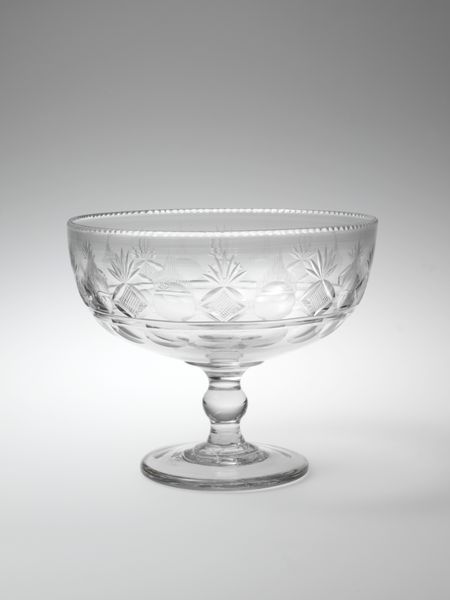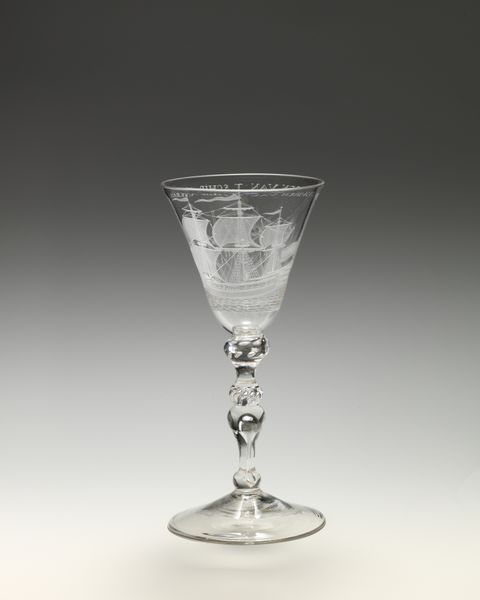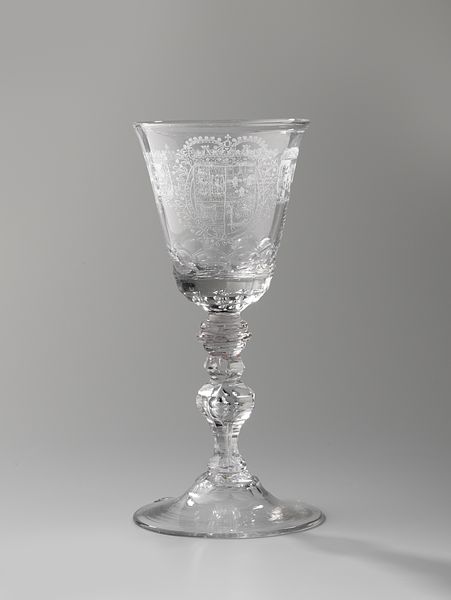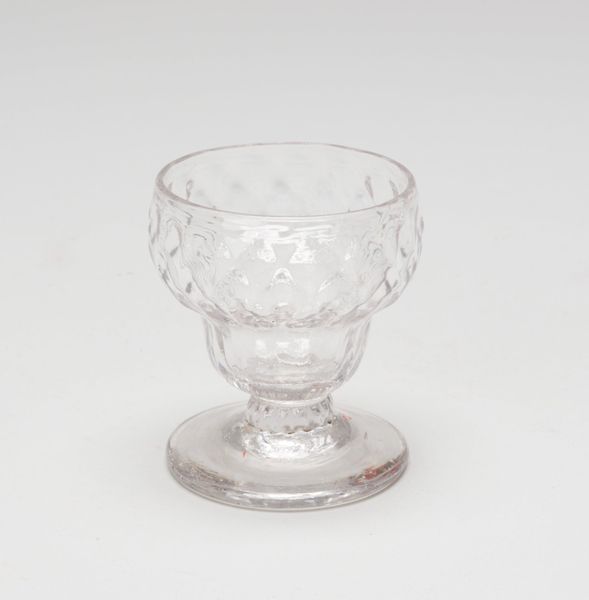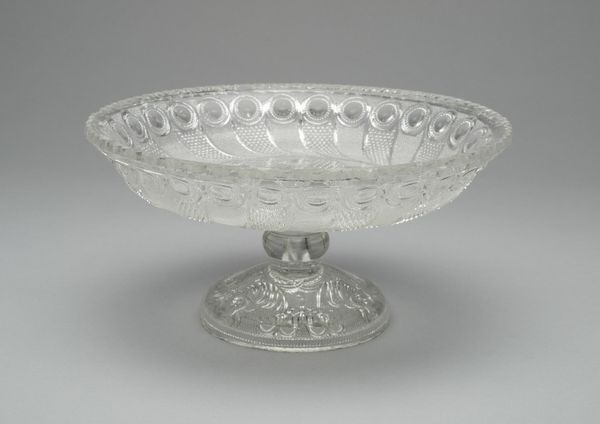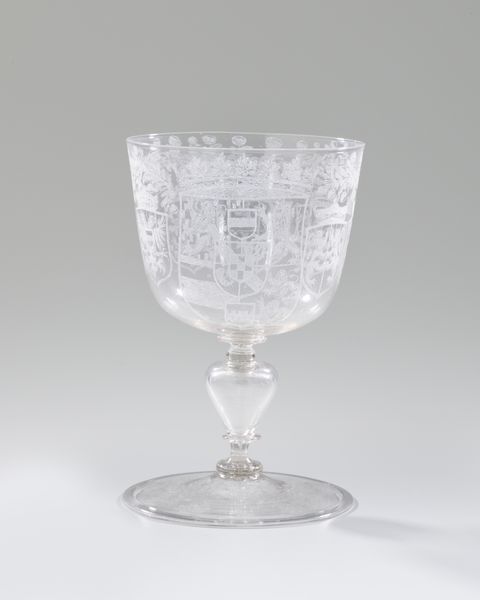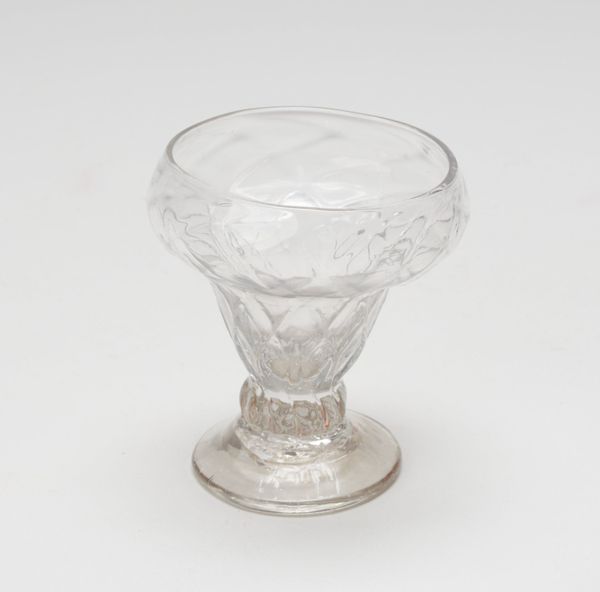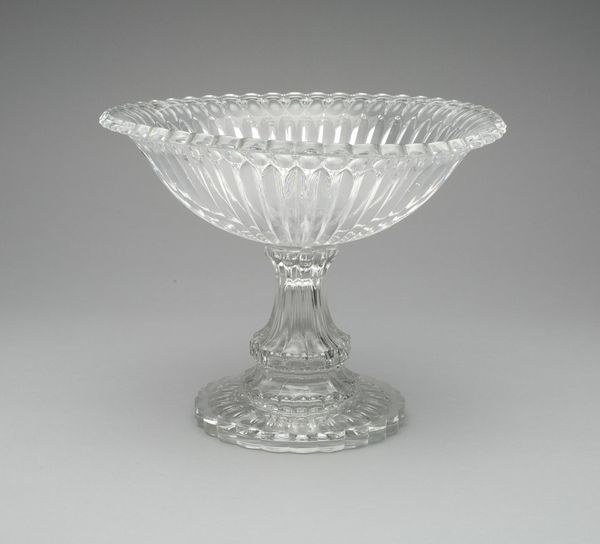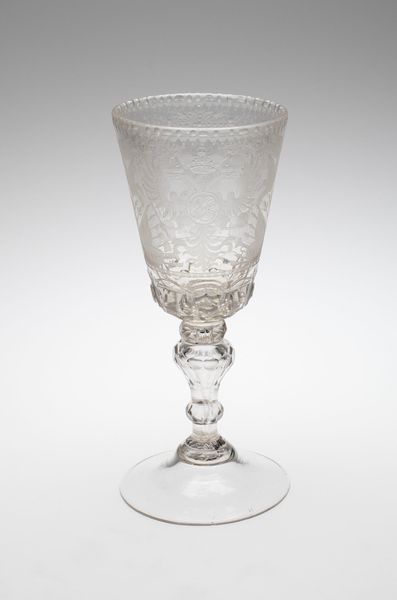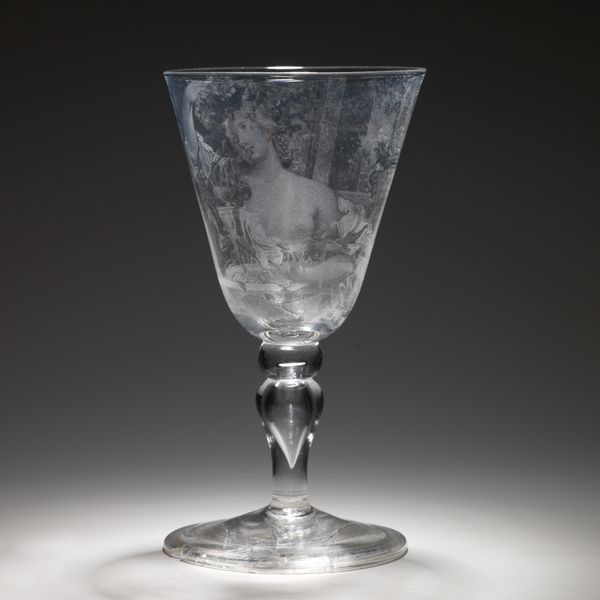
glass, sculpture
#
glass
#
sculpture
#
united-states
#
decorative-art
Dimensions: 5 7/8 x 5 1/8 x 5 1/8 in. (14.9 x 13.02 x 13.02 cm)
Copyright: Public Domain
Curator: What immediately strikes me is its geometry: the hexagonal base supporting the stem and the wide, shallow bowl, all executed in clear glass. It gives a feeling of precision, almost austere. Editor: We’re looking at a Pressed Glass Compote, an example of decorative art from 19th-century America now residing at the Minneapolis Institute of Art. It speaks volumes about evolving production techniques and consumer culture at that time. Curator: Interesting. Tell me more about the "pressed" aspect. Does that refer to the materiality? Editor: Exactly. Pressed glass allowed for mass production of glassware that mimicked more expensive cut glass. It democratized access to decorative objects; items like this would have found their way into many middle-class homes. We have to think about who was making this, in what conditions, and how it was marketed and sold. Curator: While acknowledging the social implications of mass production, I'm also drawn to the intrinsic aesthetic qualities here. Note the rhythmic patterns of circles and ridges. How does the glass transform under the light, the delicate yet sturdy base that provides such elegance. Editor: Agreed, the visual impact is undeniable, but that very "elegance" was manufactured, packaged, and consumed. Consider the molds required for pressed glass – how many artisans and what kinds of labour were invested to replicate that form again and again. And who benefits from the accessibility of glass objects? How has it affected labor practices and markets of local producers? Curator: Yes, it seems a bit cold, mass-produced as you said, but those delicate floral-like designs pressed into the glass also demonstrate an incredible mastery of the medium... the detail is phenomenal for mass production. Editor: Absolutely, it highlights both technological innovation and a shift in the artistic landscape. The artistry became enmeshed within industrial processes; skilled labor was redefined, for better or worse. By viewing the artifact this way we avoid celebrating it as art for art’s sake, while understanding its larger context of society and mass production. Curator: I see your point about deconstructing it as a consumer good... however, focusing on design features still adds depth to my experience viewing the glass in a formal and structural approach. It's clear our lenses are quite different. Editor: Indeed, a reminder of the diverse ways to interpret art. Whether appreciating the play of light or scrutinizing the socioeconomic forces, the Pressed Glass Compote presents ample fodder for conversation.
Comments
No comments
Be the first to comment and join the conversation on the ultimate creative platform.
